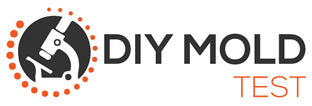
Are Mold and Mildew the Same Thing?
Mold, mildew. Mildew, mold. Many people casually interchange these words, but mold and mildew are actually two different things. Today, we’ll break down what each is and how they’re different, along with ways to treat them both. Let’s get started!
What is mildew?
Mildew is defined as a surface fungus which appears as a whitish or gray film on the surface of a moist material or area. It forms in areas by spores traveling through the air, which land in a spot and grow if they have the right environment.
Have you ever left a wet towel in the bottom of your hamper a little too long and when you go to wash, you have the smell of an old sack of potatoes? That’s from mildew. Noticed spots in your shower floor? That’s likely mildew. Mildew can appear on not just walls, tiles, and wood, but almost any surface area that is damp for too long, even fabrics.
While mildew can hang out on top of a windowsill or other surface, It doesn’t penetrate deeper like some mold can. This means that mildew can accumulate fast in the right conditions but luckily can also be quick to remove with surface cleaners. To remove mildew, you can use any typical household cleaner. Clorox has a fantastic mold & mildew cleaner, as does Kaboom. Both are easily found in grocery stores or home improvement stores. You can also make your own mildew cleaner and The Spruce has a fantastic article showing you how with vinegar.
What is mold?
Mold is another type of fungus. Like mildew, it’s spores can float through the air. And also like mildew, they need a good wet, warm environment to thrive. While mildew grows on surfaces, mold can penetrate deeper and can cause more destruction to a home. Mold will grow to a different appearance than mildew - and be more raised, fuzzy looking, and in more vibrant colors like green, reddish, and the dreaded black. It also has a more pronounced smell and can give off microbes that can make people sick.
Mold can be found in attics where ventilation isn’t good, or behind walls near leaky pipes. Many times, by the time you see mold on the outer surface, it’s done its work growing strong on the inside. Mold with sizeable growth can even give homeowners health symptoms that mimic allergies as well as migraines and dizziness. While using surface cleaners may remove immediate spores on a surface for both mold and mildew, keeping areas dry is key to keeping them from coming back. Mold, in particular, may need certain treatments to remove and can be dangerous to remove yourself without proper ventilation. If you think you may have mold in your home, it is wise to do surface or air tests and depending on the type of mold present, have a professional mold remediator remove the mold. We offer both types of tests for those wanting to try taking samples themselves. With the tests, our team of lab analysts will determine if your samples contain mold and what type. We can then provide suggestions on how to best remove the fungus.
How do I get rid of the stains left by mildew or mold?
Once the mold or mildew has been killed and the moisture issue fixed, you may be searching for how to clean up your surfaces and remove stains. We offer a stain remover spray that can quickly break down the stains left behind, helping to save your walls, grout, painted surfaces and more. The mold and mildew stain remover can only be used though after all mold or mildew has been killed or removed.
If you’re wondering how best to proceed with that questionable spot on your shower ceiling, or the smell coming from your attic, you can send us a note in our online form and we can advise you as to your next best steps.
Leave a comment
Comments will be approved before showing up.
Also in Mold Testing & Information Resource Blog



